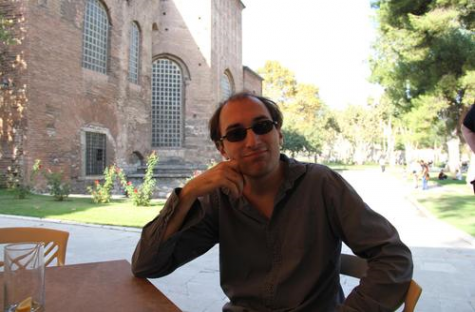
Maxime GAUIN
The op-ed published in Le Figaro by E. Nalbandian, the Minister of Foreign Affairs of Armenia, and a longer version put on his Facebook page,[i] do not help at all the reconciliation between Armenia and Turkey. On the contrary, it undermines this idea. By every aspect, this text is a repetition of classical, inaccurate assertions of anti-Turkish propaganda. Having answered the French version in French, I will now be answering the full version in English.
In Mr. Nalbandian’s op-ed, even the cliché of the “Ottoman night” is not spared to the reader:
“Like other empires, the Ottoman Empire was built upon and forcefully sustained through suppression of the basic rights and freedoms of many of its citizens.”
In fact, the Ottoman Empire was based on the millet system, which gave to the non-Muslims communities, especially the Greeks, the Armenians and the Jews, an autonomy that did not exist in Russia, for example. During the 19th century, the millet system was reformed, becoming more liberal and closer to a democracy. From 1839 to 1856, the Tanzimat (“reforms,” “reorganizations”) abolished the civil inequalities between Muslims and non-Muslims.
On June 15, 1867, Prince Mıgıdırç Dadian, an Armenian aristocrat who lived outside the Ottoman Empire, published a long article (reprinted later as a booklet) in the Revue des deux mondes (Paris), praising the Ottoman reforms and describing the situation of the Ottoman Armenians as satisfactory. Even after Abdülhamit II (1876-1909) had suspended the Ottoman Constitution in 1878, he left untouched the Constitutions of the non-Muslims millets, their schools, their churches or synagogues. In a detailed study, the Armenian scholar Mesrob K. Krikorian concluded that, relative to the population, the Armenians were the most represented ethnic group in the local Ottoman administration of eastern Anatolia, from 1860s to 1900s.[ii]
To quote only few examples on the Young Turk era (1908-1918): Berç Kerestecıyan was deputy general manager of the Ottoman Bank until 1914, and general manager from 1914 to 1927 (eventually, he served as a MP of Afyon at the Turkish National Assembly, from 1935 to 1946, but this is beyond Ottoman history). In politics, Bedros Kapamacıyan was elected as mayor of Van, thanks to the support of the Committee Union and Progress (CUP) in 1909 - and assassinated in 1912, not by Muslims, but by the Armenian Revolutionary Federation. At the national level, Bedros Hallaçyan, a member of the CUP, was elected three times as a deputy of İstanbul (1908, 1912, and 1914). He was the Minister of Public Works from 1909 to 1912, member of the CUP’s central committee from 1913 to 1915, representative of the Ottoman Empire in the Permanent Court of Arbitration (The Hague, Netherlands) from 1915 to 1916 and eventually president of the commission in charge to rewrite the Ottoman commercial code (1916-1918). Last example: Oskan Mardikian, who was also a member of the CUP, has been the Ottoman minister of Posts, Telephones and Telegraphs from 1913 to 1914.
Mr. Nalbandian should also wonder why, after centuries of Ottoman domination; the Armenians of eastern Anatolia still spoke Armenian fluently, unlike the children of Armenian immigrants in Russia today.
Regarding the allegations of “genocide,” Mr.Nalbandian presents a regrettable series of already debunked hoaxes and distortions of sources. Let’s see the main ones:
1) “One of the earliest references to the Armenian Genocide belongs to Muslim witness Fayez El Ghossein, who in 1916 published his work entitled ‘The Massacres in Armenia.’”
Unfortunately for Mr. Nalbandian, “Fayez El Ghossein” did not exist. There is no trace of an Ottoman civil servant having occupied the functions described in this book, during the First World War. The manuscript of the book, supposedly in Arabic, cannot be showed because it never existed. Similarly, there is no British document on the arrival of “Fayez El Ghossein” to a British-dominated territory. This is a fictional character.
There was actually a Faiz al-Ghusayn (1883-1968), but he was dismissed from the Ottoman administration in 1912 or 1913 and, having lost hopes of a career in the Ottoman bureaucracy, he joined an Arab nationalist group during the First World War.
2) “In 1915 one of the chief masterminds of the Armenian Genocide, then Interior Minister Mehmed Talaat Pasha confessed to Germany’s Consul General that ‘there is no Armenian question, because there are no more Armenians.’”
Mr. Nalbandian does not even remember well this distortion of source, invented by the sociologist Vahakn N. Dadrian: Talat supposedly “confessed” that to the German ambassador, not the consul general. More important, the full text is available online, in German and English, so everybody can check that the meaning of the document has been inverted by Armenian propagandists.[iii] An excerpt from this source:
“On the 2nd of this month, Talaat Bey gave me the German translation of various telegraphic orders on the persecution of the Armenians which he sent to the provincial authorities concerned, copies of which are enclosed. With these, he wished to deliver proof that the central government is seriously attempting to end the riots, which have taken place against the Armenians in the heart of the country and to see to it that those who have been deported receive provisions during transport. A few days earlier, in reference to this, Talaat Bey said to me, "La question arménienne n'existe plus." ("The Armenian question no longer exists.")”
3) “Or, how can one speak of ‘relocation’, when 1.5 million of people died or were killed?”
Even the Armenian delegations did not allege, in 1918-1919, that “1.5 million of people died or were killed.” Arnold J. Toynbee estimated the total losses to about 600,000.[iv] The same estimation is used by R. Khérumian, a strongly nationalist Armenian scholar.[v] The American historian Justin McCarthy correspondingly estimates the total losses to around 600,000 from 1914 to 1922[vi] and another American historian, Guenter Lewy, concludes that the figure must be around 642,000.[vii]
Among these 600,000/650,000, not all perished as a result of Ottoman actions:
— 150,000 (out of 300,000) died during the Russian relocation from Anatolia to Caucasus, in 1915-1916;
— At least 50,000 (out of 200,000) died in 1918-1919 because of epidemics in independent Armenia (the figure of 200,000 corresponds to the 150,000 survivors already mentioned and 50,000 additional refugees arrived in 1918, during the Russian withdrawal);
— Between 2000 to 3,000 (out of 5,000) during the French evacuation of Maraş (February 1920).
These figures are also illuminating on the actual conditions of every population transfers in this part of the world at that time.
4) “It seems that the 1919 Turkish Military Tribunal’s Indictment, which proved by undeniable facts that the deportations and large-scale massacres of the Armenians were a state policy, and sentenced its main masterminds to death, has been forgotten in Ankara.”
I am reproducing what I wrote two years ago in the European Journal of International Law, because in two years, nobody tried to challenge this analysis:
“Furthermore, the occupying British forces took 144 Ottoman officials to Malta to try them in a tribunal for presumed war crimes and crimes against Armenians. The author misrepresents the case of those 144 Ottoman officials interned in Malta from 1919 to 1921. They were released after more than two years of unsuccessful investigation by a British prosecutor and his staff. The occupying powers had not found enough evidence in the British, US, and Armenian archives, or in the Ottoman documentation seized by the British army. The statement by the author that the archives had been destroyed does not reflect the truth. It is known that at that time the British government relied on an Armenian researcher, Haig Khazarian, in its hunt for incriminating evidence against Ottoman officials taken to Malta. The British also requested the US government’s help for this purpose, but received the response that there was not enough evidence. If even the slightest evidence existed in the hands of the British authorities - enough to incriminate the prisoners in Malta - the trials would surely have taken place of the Ottoman citizens who were sent to Malta to face trial.
Malta’s prosecutor refused to use the material of the courts martial of 1919–1920. Indeed, the trial of the ministers in 1919 was legally null and void, since it took place in the form of a court martial. According to the Ottoman Constitution, the ministers could be tried only by the High Court for crimes committed in the exercise of their responsibilities. As early as 1919, the right to appeal the sentences was denied. The courts martial of 1919-1920 did not allow cross-examination, the right to which exists even at Guantanamo. In April 1920, Damat Ferit Pasha even banned the defendants from hiring a lawyer. After the final fall of Damat Ferit, the rights to appeal and hire a lawyer were restored. All the surviving convicts of April–October 1920 appealed their convictions, and they were acquitted of all or most of the charges. These decisions took place when Istanbul was still occupied by the Entente.”[viii]
More specifically on the indictment of 1919, it must be remarked that even the verdict did not include most of the prosecutor’s allegations: the sole argument of the verdict, regarding the Armenians, is that since the indicted were ministers during the relocation, they must be guilty, at least due to their passivity. Such reasoning is contradicted by the facts. In 1915 only, more than twenty Muslims were hanged by the Ottoman judicial system, because they had killed Armenians, as reported by the German ambassador.[ix] From February to May 1916, 67 other Muslims were sentenced to death, 68 to hard labor or imprisonment in a castle and 524 to jail, as a result of the work of three investigative commissions created by decision of the Ottoman cabinet.[x] The proposition to establish these investigative commissions had been introduced to the ministers’ council by Talat Pasha, the supposed “chief mastermind of the Armenian Genocide” in Mr. Nalbandian’s words.
Beyond this core of Mr. Nalbandian’s poor reasoning, there are secondary remarks, hardly better than the ones already analyzed in this article. For example:
1) “It seems that Rafael Lemkin’s development of the concept of “genocide” has gone unnoticed in Ankara.”
During the last years, Rafael Lemkin indeed became an obsessive reference for Armenian propaganda. The problem is that such reference is totally wrong. Lemkin coined the word “genocide” in his book Axis Rule in Occupied Europe, written in 1943 and published in 1944 by the Carnegie Endowment for Peace. There is not a single reference to the Armenians in this book. Regarding the concept itself, Lemkin’s definition of “genocide” has been rejected by the United Nations in 1948. Since Tal Buenos devoted two articles to Lemkin and the Armenian question, it is unnecessary to give here more details.[xi]
2) “Is it possible to equate perpetrators and victims of genocide by such clichés as ‘common pain’?”
This sentence can only be considered as racist, because it means that the Turkish (and Jewish) population of Anatolia as a whole was made of “perpetrators of genocide.” The truth is that there were Armenian war criminals, at least as much as there were Turkish, Kurdish, Circassian and Arab ones.
Even the Russian sources teach us that the Armenian war crimes began before the Ottoman relocation:
“One tsarist official, Prince Vasilii Gadzhemukov, bluntly laid out the case against the Armenians in a report to Yudenich. […] With their indiscriminate slaughter of Muslims at Van [spring 1915], he explained, ‘the Armenians themselves’ had given the ‘signal of the barbaric destruction of the Armenian nation in Turkey’. And although that destruction left ‘the positive result that Turkey has left us Armenia without Armenians’, the legacy of Van had stiffened Muslim resistance to Russian arms ‘for fear of falling into Armenian hands’.”[xii]
Discussing the Armenian war crimes of 1916 and 1917-1918, U.S. Major General James G. Harbord, who had been a friend of the Armenian people all his life, wrote that these acts “unquestionably rivaled the Turks in their inhumanity.”[xiii] Correspondingly, Emory H. Niles and Arthur E. Sutherland, who were members of the Harbord commission, specifically in charge of the most eastern parts of Anatolia, concluded: “We believe that it is incontestable that the Armenians were guilty of crimes of the same nature against the Turks as those of which the Turks are guilty against the Armenians.”[xiv]
About 10,000 Ottoman Jews were exterminated by Armenian nationalists as well. In particular the Jewish community of Van province, which existed since ancient times, was totally annihilated during the First World War.
More specifically regarding Armenia itself, the French High Commissioner in the Caucasus, Damien de Martel, reported that in June 1920 that 36,000 “Tatars” (Azeris) had been expelled from the south of Yerevan to Turkey and 4,000 others killed at the same place - “including women and children, drowned by Armenian soldiers in the Aras River.” Damien de Martel concluded: “It did not seem unnecessary to report these details, which show that this is not always, ‘the same ones who are massacred.’”[xv]
The population in the territory of what is today Armenia was around 80% Muslim in 1828 when the Russians conquered it, and it was around 40% in 1897. Today, Muslims do even represent 1% of this territory. In addition, Armenia invaded 20% of the Azerbaijan’s territory in 1992-1994 and physically eliminated the Azeri population, by expulsions and massacres. It was only logical, because G. Nejdeh and Drastamat Kanayan, who were among the most involved perpetrators of the 1918-1920 ethnic cleansing (and both joined the Third Reich’s army during the Second World War) are among the top ideological references for the current Armenian government. Regardless, how a minister of a state who has such a past of ethnic cleansing can pretend giving lessons of human rights?
3) “Not only Armenians, the whole international community for almost 100 years has been waiting for Turkey to recognize the Armenian Genocide.”
Mr. Nalbandian knows perfectly well that he is crudely lying. Indeed, the European Court of Human Rights decided last December that Switzerland was wrong in the Perinçek v. Switzerland case:
“117. In any event, it is even doubtful that there can be a “general consensus”, particularly among academics, about events such as those in issue in the present case, given that historical research is by definition subject to controversy and dispute and does not really lend itself to definitive conclusions or the assertion of objective and absolute truths (see, to similar effect, the Spanish Constitutional Court’s judgment no. 235/2007, referred to in paragraphs 38-40 above). In this connection, a clear distinction can be made between the present case and cases concerning denial of crimes relating to the Holocaust (see, for example, the case of Robert Faurisson v. France, determined by the UN Human Rights Committee on 8 November 1996, Communication no. 550/1993, doc. CCPR/C/58/D/550/1993 (1996)). Firstly, the applicants in those cases had not disputed the mere legal characterisation of a crime but had denied historical facts, sometimes very concrete ones, such as the existence of gas chambers. Secondly, their denial concerned crimes perpetrated by the Nazi regime that had resulted in convictions with a clear legal basis, namely Article 6, sub-paragraph (c), of the Charter of the (Nuremberg) International Military Tribunal, annexed to the London Agreement of 8 August 1945 (see paragraph 19 above). Thirdly, the historical facts challenged by the applicants in those cases had been found by an international court to be clearly established.”[xvi]
Correspondingly, the British government has consistently refused to accept the “Armenian genocide” label; the “recognition” has been rejected by the Spanish, Danish, Bulgarian and Israeli Parliament.
Mr. Nalbandian, making this regrettable intervention, did not act as a diplomat working for the interests of his country but as a politician securing the internal and external support of those who do not wish to see a Turco-Armenian reconciliation.
[i] The full version of Mr. Nalbandian’s op-ed is also available on the website of the Ministry of Foreign Affairs of Armenia: http://www.mfa.am/en/interviews/item/2014/09/06/figaro_nalbandian/
[ii] Mesrob K. Krikorian, Armenians in the Service of the Ottoman Empire, 1860-1908 (London: Routledge & Kegan Paul, 1977).
[iii] http://www.armenocide.de/armenocide/armgende.nsf/24599fab3538b532c1257794007b610b/300f11530a3eacfdc1256d3d006c1e43!OpenDocument.
[iv] Arnold J. Toynbee, The Treatment of Armenians in the Ottoman Empire: Documents presented to Viscount Grey of Fallodon (London: Hodder & Stoughton, 1916), pp. 650-651; The Western question in Greece and Turkey (London: Constable & Co., 1922), p. 342.
[v] R. Khérumian, Introduction à l'anthropologie du Caucase: les Arméniens (Paris, Paul Geuthner, 1943), pp. 13-14.
[vi] Justin McCarthy, Muslims and Minorities. The Population of Ottoman Anatolia and the End of the Empire (London: New York University Press, 1983).
[vii] Guenter Lewy, The Armenian Massacres in Ottoman Turkey: A Disputed Genocide (Salt Lake City: University of Utah Press, 2005), pp. 234-241.
[x] Yusuf Sarınay, “The Relocation (tehcir) of Armenians and the Trials of 1915-16,” Middle East Critique, XX-3 (Fall 2011), pp. 307-312, http://www.scribd.com/fullscreen/93159908?access_key=key-1rc80q8km8056bwtfov6
[xi] http://www.dailysabah.com/opinion/2014/08/01/the-lemkin-hole-in-the-swiss-case; http://www.dailysabah.com/opinion/2014/09/11/many-genocides-of-raphael-lemkin
[xii] Michael A. Reynolds, Shattering Empires. The Clash and Collapse of the Ottoman Empires, 1908-1918 (Cambridge: Cambridge University Press, 2011), pp. 157-158.
[xiii] Conditions in the Near East. Report of the American Military Mission to Armenia (Washington: Government Printing Office, 1920), p. 9.
© 2009-2025 Center for Eurasian Studies (AVİM) All Rights Reserved
No comments yet.
-
 ROBERT FISK, BETWEEN FRANCOPHOBIA AND TURKOPHOBIA
ROBERT FISK, BETWEEN FRANCOPHOBIA AND TURKOPHOBIA
Maxime GAUIN 19.11.2015 -
 THE “NEJDEHISM” REMAINS OFFICIAL IN ARMENIA
THE “NEJDEHISM” REMAINS OFFICIAL IN ARMENIA
Maxime GAUIN 30.10.2019 -
 MR. NALBANDIAN DID NOT TELL THE TRUTH
MR. NALBANDIAN DID NOT TELL THE TRUTH
Maxime GAUIN 11.09.2014 -
 ARMENIA, THE 'BRANCH OF RUSSIA' IN THE SOUTH CAUCASUS
ARMENIA, THE 'BRANCH OF RUSSIA' IN THE SOUTH CAUCASUS
Maxime GAUIN 31.08.2015 -
 PATRICK DEVEDJIAN: A NEO-FASCIST WHO WAS A LIFE-LONG SUPPORTER OF TERRORISM
PATRICK DEVEDJIAN: A NEO-FASCIST WHO WAS A LIFE-LONG SUPPORTER OF TERRORISM
Maxime GAUIN 02.04.2020
-
 OUTSIDE INTERVENTION TO THE ELECTION OF THE ARMENIAN PATRIARCH OF ISTANBUL
OUTSIDE INTERVENTION TO THE ELECTION OF THE ARMENIAN PATRIARCH OF ISTANBUL
Mehmet Oğuzhan TULUN 15.03.2017 -
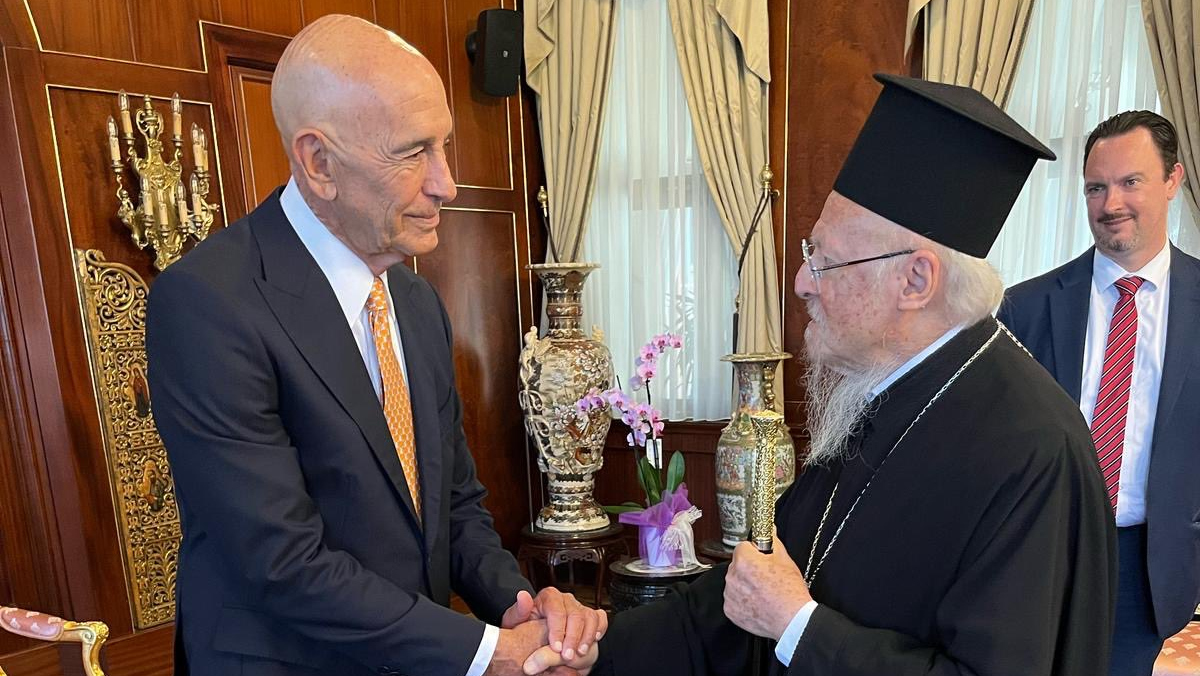 THE HARMFUL EFFECTS OF THE POLITICIZATION OF THE FENER GREEK PATRIARCHATE
THE HARMFUL EFFECTS OF THE POLITICIZATION OF THE FENER GREEK PATRIARCHATE
Mehmet Oğuzhan TULUN 03.09.2025 -
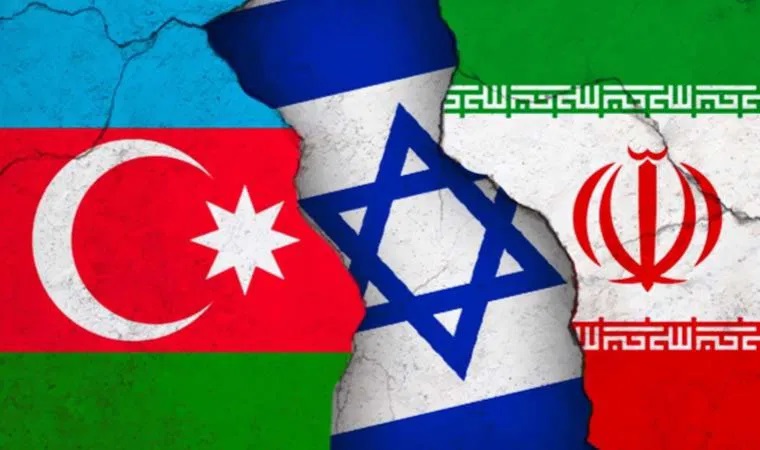 OVERLAPPING INTERESTS IN THE SOUTH CAUCASUS: THE AZERBAIJAN, ISRAEL AND IRAN TRIANGLE
OVERLAPPING INTERESTS IN THE SOUTH CAUCASUS: THE AZERBAIJAN, ISRAEL AND IRAN TRIANGLE
İlaha KHANTAMİROVA 29.05.2025 -
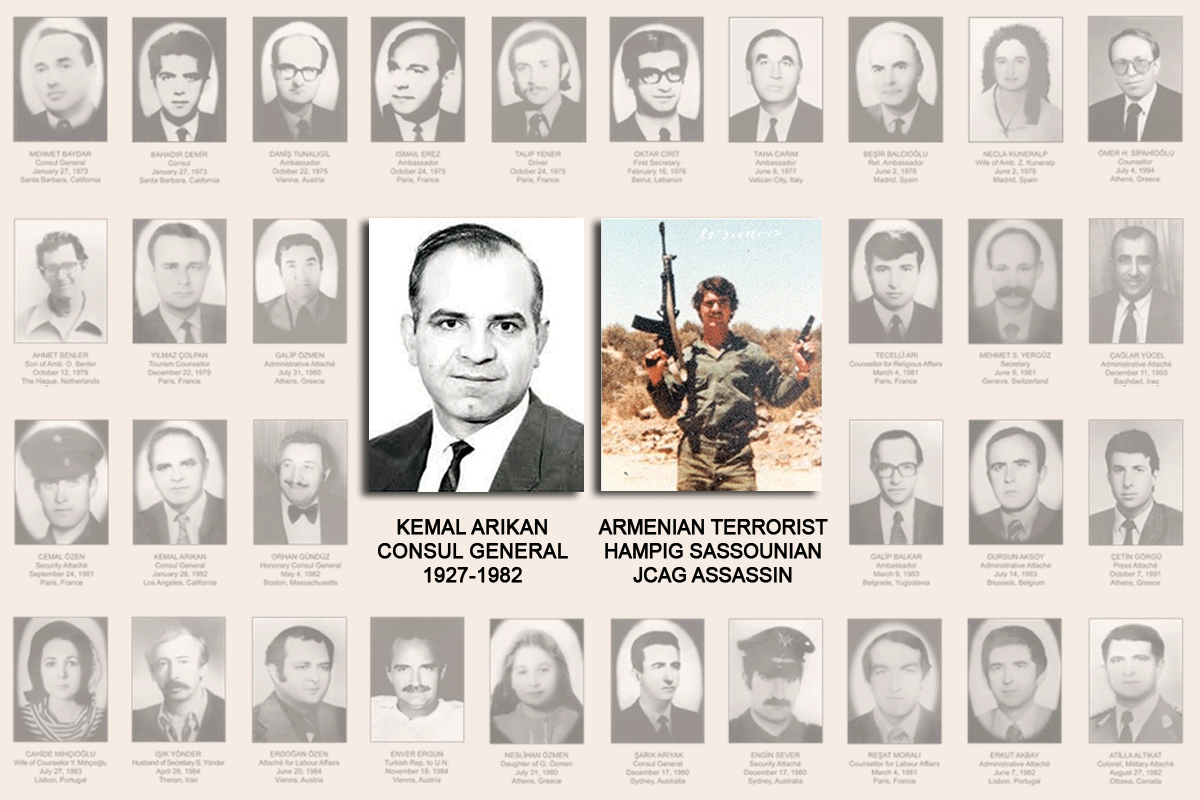 THE DECISION TO RELEASE SASSOUNIAN
THE DECISION TO RELEASE SASSOUNIAN
Hazel ÇAĞAN ELBİR 16.03.2021 -
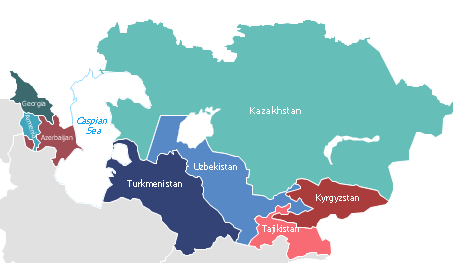 A QUARTER OF A CENTURY OF INDEPENDENCE OF CENTRAL ASIAN AND SOUTH CAUCASUS COUNTRIES: AN ECONOMIC SNAPSHOT AND PROSPECTS FOR THE FUTURE
A QUARTER OF A CENTURY OF INDEPENDENCE OF CENTRAL ASIAN AND SOUTH CAUCASUS COUNTRIES: AN ECONOMIC SNAPSHOT AND PROSPECTS FOR THE FUTURE
Teoman Ertuğrul TULUN 14.12.2016
-
25.01.2016
THE ARMENIAN QUESTION - BASIC KNOWLEDGE AND DOCUMENTATION -
12.06.2024
THE TRUTH WILL OUT -
27.03.2023
RADİKAL ERMENİ UNSURLARCA GERÇEKLEŞTİRİLEN MEZALİMLER VE VANDALİZM -
17.03.2023
PATRIOTISM PERVERTED -
23.02.2023
MEN ARE LIKE THAT -
03.02.2023
BAKÜ-TİFLİS-CEYHAN BORU HATTININ YAŞANAN TARİHİ -
16.12.2022
INTERNATIONAL SCHOLARS ON THE EVENTS OF 1915 -
07.12.2022
FAKE PHOTOS AND THE ARMENIAN PROPAGANDA -
07.12.2022
ERMENİ PROPAGANDASI VE SAHTE RESİMLER -
01.01.2022
A Letter From Japan - Strategically Mum: The Silence of the Armenians -
01.01.2022
Japonya'dan Bir Mektup - Stratejik Suskunluk: Ermenilerin Sessizliği -
03.06.2020
Anastas Mikoyan: Confessions of an Armenian Bolshevik -
08.04.2020
Sovyet Sonrası Ukrayna’da Devlet, Toplum ve Siyaset - Değişen Dinamikler, Dönüşen Kimlikler -
12.06.2018
Ermeni Sorunuyla İlgili İngiliz Belgeleri (1912-1923) - British Documents on Armenian Question (1912-1923) -
02.12.2016
Turkish-Russian Academics: A Historical Study on the Caucasus -
01.07.2016
Gürcistan'daki Müslüman Topluluklar: Azınlık Hakları, Kimlik, Siyaset -
10.03.2016
Armenian Diaspora: Diaspora, State and the Imagination of the Republic of Armenia -
24.01.2016
ERMENİ SORUNU - TEMEL BİLGİ VE BELGELER (2. BASKI)
-
AVİM Conference Hall 24.01.2023
CONFERENCE TITLED “HUNGARY’S PERSPECTIVES ON THE TURKIC WORLD"









